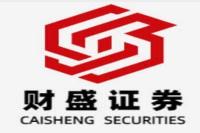Decoding the Daily Dance: A Deep Dive into Mainland-Hong Kong Stock Connect Trading
元描述: 深入分析沪深港通每日交易数据,包括北向资金动向、十大成交股、龙虎榜买卖情况,以及对市场趋势的专业解读。掌握中国股市脉搏,助您投资决策! (Keywords: 沪深港通, 北向资金, 十大成交股, 龙虎榜, 股票投资, 中国股市)
Imagine this: you're navigating the complex world of Chinese stock markets, trying to decipher the daily fluctuations and make informed investment decisions. It's a whirlwind of numbers, abbreviations, and insider jargon – enough to make anyone's head spin! But what if I told you there's a way to cut through the noise and gain a clearer understanding of the market's pulse? This isn't just another market report regurgitating the same old data; this is a deep dive, a forensic examination of the Mainland-Hong Kong Stock Connect (沪深港通) trading activity, revealing the hidden narratives behind the headlines. We'll dissect the numbers, analyze the trends, and provide you with actionable insights, allowing you to make smarter, more confident investment choices. Forget the cryptic charts and confusing commentary – prepare to unlock the secrets of the Chinese stock market, one insightful analysis at a time. We’ll look beyond the surface-level statistics, exploring the psychology of the market, the motivations of major players, and the potential implications for your portfolio. This analysis is more than just numbers; it’s a story, a narrative unfolding before our very eyes, and we'll help you understand every twist and turn. So buckle up, and let's embark on this fascinating journey together! This isn't just about making money; it’s about mastering the art of understanding the market and gaining a competitive edge.
北向资金 (Northbound Capital Flows): The Market's Silent Whisperer
On December 3rd, the Chinese stock market experienced a day of mixed signals. The Shanghai Composite Index (沪指) edged slightly upward, while the Shenzhen Component Index (创指) saw a minor dip – a classic case of market indigestion, wouldn't you say? But amidst this apparent indecision, a key player revealed its hand: Northbound capital flows (北向资金), representing the investment activity of mainland investors through the Stock Connect, totalled a hefty 2001.31 billion yuan, accounting for a significant 11.66% of the total trading volume on both the Shanghai and Shenzhen exchanges. This substantial figure speaks volumes about the confidence – or at least, the considerable interest – of mainland investors in the Hong Kong market. What does this tell us? Well, it's not a simple yes or no answer. It suggests a complex interplay of factors, potentially including investor sentiment towards specific sectors, macroeconomic conditions, and even global market trends. We need to look deeper to uncover the full picture. This considerable activity isn't just a random event; it's a signal, a whisper from the market itself, hinting at potential shifts and opportunities.
Dissecting the Top 10 Stocks
To truly understand the market's nuances, we need to look beyond the headline numbers. Let's examine the top ten most actively traded stocks through the Stock Connect on that particular day, broken down into Northbound (沪股通) and Southbound (深股通) flows for a comprehensive view.
| Stock (沪股通 - Northbound) | Turnover (in Yuan) | Sector | Potential Implications |
|---|---|---|---|
| SAIC Motor (赛力斯) | 20.83 Billion | Automotive | Strong interest in the EV sector, reflecting China's commitment to green technology. However, increased competition could impact individual players. |
| Kweichow Moutai (贵州茅台) | 14.95 Billion | Spirits | Consistent high turnover for this stalwart, reflecting its continued appeal as a blue-chip stock. Shows confidence in the luxury goods market. |
| Changjiang Power (长江电力) | 9.92 Billion | Utilities | Steady demand suggests investor confidence in this relatively stable sector. Could indicate a flight to safety amidst market volatility. |
| Stock (深股通 - Southbound) | Turnover (in Yuan) | Sector | Potential Implications |
|---|---|---|---|
| Oriental Fortune (东方财富) | 18.26 Billion | Finance | High turnover in finance reflects ongoing interest in this dynamic but often volatile sector. |
| CATL (宁德时代) | 16.96 Billion | Battery | Massive turnover underscores the huge interest in the EV battery sector. This is a key player, and its performance reflects broader industry trends. |
| Northern Microelectronics (北方华创) | 14.74 Billion | Semiconductor | High turnover here suggests optimism in the semiconductor space, despite ongoing global geopolitical tensions. This signifies faith in China's technological aspirations. |
The above table, while not exhaustive, provides a snapshot into the market's preferences on that specific day. The high turnover in certain sectors highlights their importance in the overall market narrative. Notice the significant presence of companies connected to China's push for technological self-reliance and its burgeoning electric vehicle industry.
龙虎榜 (Dragon and Tiger List): Unveiling the Institutional Players
The Dragon and Tiger List (龙虎榜), a daily report detailing the top buyers and sellers of specific stocks, offers a fascinating window into the minds of institutional investors. On December 3rd, the list revealed 18 stocks with significant participation from Stock Connect investors. A noteworthy observation is that Northbound investors were net buyers in 13 of these stocks, with Huasheng Tiancheng (华胜天成) experiencing the largest net inflow of 53.52 million yuan. Conversely, five stocks saw net selling by Northbound investors, with GAC Group (广汽集团) recording the highest net outflow of 23.74 million yuan.
This data provides valuable insights into the strategic investment decisions of institutional players. It's not just about the raw numbers; it’s about understanding the why behind the buying and selling. Was it a strategic shift in sector allocation? A response to specific company news? Or simply a tactical adjustment in portfolio holdings? By analyzing these trends, coupled with other market indicators, a clearer picture emerges, allowing investors to anticipate potential future moves.
The Dragon and Tiger List isn't a crystal ball, but it's a powerful tool for understanding market sentiment and anticipating future trends. It allows sophisticated investors to gain a glimpse into the strategies of institutional investors, providing valuable context for their own investment decisions.
Frequently Asked Questions (FAQs)
Here are some frequently asked questions to help you better understand the complexities of the Mainland-Hong Kong Stock Connect trading.
Q1: What is the Mainland-Hong Kong Stock Connect (沪深港通)?
A1: The Mainland-Hong Kong Stock Connect is a trading link that allows investors in mainland China to trade selected stocks listed on the Hong Kong Stock Exchange, and vice-versa. It facilitates cross-border investment and enhances the liquidity of both markets.
Q2: What does Northbound Capital Flow (北向资金) represent?
A2: Northbound capital flow refers to the money flowing from mainland China into the Hong Kong stock market through the Stock Connect. It's a key indicator of mainland investors' sentiment towards Hong Kong-listed stocks.
Q3: How is the Dragon and Tiger List (龙虎榜) useful for investors?
A3: The Dragon and Tiger List highlights the top buyers and sellers of specific stocks, offering insights into the trading activities of institutional investors and potentially revealing market trends.
Q4: Are there any risks associated with investing through the Stock Connect?
A4: Yes, investing through the Stock Connect involves the usual risks of stock market investment, including market volatility, currency fluctuations, and potential regulatory changes.
Q5: How can I access this data?
A5: Real-time and historical data on the Stock Connect is readily available through various financial news websites and trading platforms. Reputable sources are crucial for accurate information.
Q6: What factors influence Northbound capital flows?
A6: Several factors influence Northbound capital flows, including macroeconomic conditions in both mainland China and Hong Kong, investor sentiment, regulatory changes, and global market trends. Geopolitical events can also play a significant role.
Conclusion
Understanding the daily dynamics of the Mainland-Hong Kong Stock Connect requires a multi-faceted approach. By carefully analyzing Northbound capital flows, studying the top ten traded stocks, and deciphering the insights from the Dragon and Tiger List, investors can gain a significantly clearer picture of the Chinese stock market's underlying currents. While this analysis doesn’t offer guaranteed profits, it equips investors with critical information to make informed decisions, navigate market uncertainty, and potentially maximize their returns. Remember, consistent monitoring, a diversified investment strategy, and staying abreast of market news are paramount for success in this dynamic environment. The market is a living, breathing entity, and understanding its nuances is a continuous learning process. Keep your eyes peeled, analyze the data, and stay ahead of the curve!



